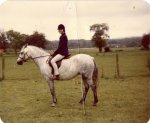Mrs B
Well-Known Member
What about rather than straw bed a bucket of the chopped straw feed products. If he ignores it, he can't be that hungry but it's there to pick at if needed. It's a feed so presumably the yard would be OK with it
I've not tried any personally (just use a slice of normal straw at bottom of hay bar) but looks to be lots of brands that claim to be just straw
Yes, that's the sort of thing I'm after


